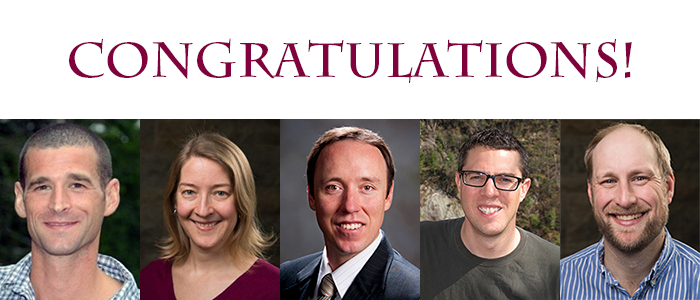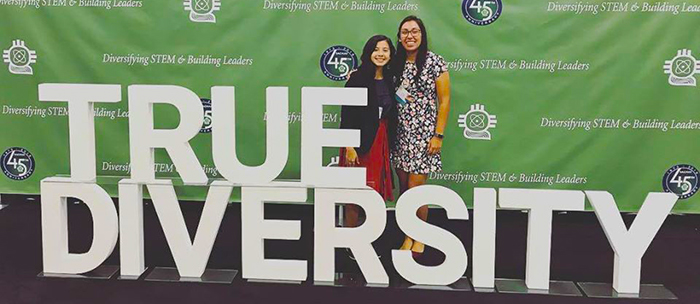[vc_row][vc_column][vc_separator style=”dotted”][vc_column_text]
November 20, 2020
Each year, the Global Change Center (GCC) solicits proposals from GCC faculty to support interdisciplinary research that will lead to collaborative proposals submitted to extramural funding sources. Selected projects link multiple faculty programs and take advantage of unique combinations of expertise at VT, have societal implications and/or a policy component, deal with emerging global change issues that have regional significance, and have high potential to eventually leverage external resources.
The fall 2020 application cycle saw the highest number of proposals submitted to date, resulting in five teams awarded a cumulative total of $108K in seed grant funding from the Global Change Center, with support from the Fralin Life Sciences Institute.
Congratulations GCC faculty and collaborators![/vc_column_text][/vc_column][/vc_row][vc_row][vc_column width=”1/4″][vc_single_image image=”52887″ img_size=”large” alignment=”center” style=”vc_box_shadow_border_circle_2″][/vc_column][vc_column width=”3/4″][vc_column_text]
Taking the Pulse of Global Shark Populations
INVESTIGATORS:
- Dr. Francesco Ferretti, Fish and Wildlife Conservation
- Dr. Edward Fox, Computer Science
- Dr. Trevor Hastie, Statistics, Stanford University
[/vc_column_text][/vc_column][/vc_row][vc_row][vc_column][vc_separator style=”dotted”][/vc_column][/vc_row][vc_row][vc_column width=”1/4″][vc_single_image image=”52907″ img_size=”large” alignment=”center” style=”vc_box_shadow_border_circle_2″][/vc_column][vc_column width=”3/4″][vc_column_text]
Salty carbon: Testing the consequences of freshwater salinization on stream food web dynamics and ecosystem metabolism
INVESTIGATORS:
- Dr. Erin Hotchkiss, Biological Sciences
- Dr. Sally Entrekin, Entomology
- Dr. Stephen Schoenholtz, Forest Resources and Environmental Conservation
- Dr. Daniel McLaughlin, Forest Resources and Environmental Conservation
[/vc_column_text][/vc_column][/vc_row][vc_row][vc_column][vc_separator style=”dotted”][/vc_column][/vc_row][vc_row][vc_column width=”1/4″][vc_single_image image=”52929″ img_size=”large” alignment=”center” style=”vc_box_shadow_border_circle_2″][/vc_column][vc_column width=”3/4″][vc_column_text]
Using a global weed to disentangle environment and host effects on plant-microbe interactions across nested spatial scales
INVESTIGATORS:
- Dr. Bryan Brown, Biological Sciences
- Dr. Brian Badgley, School of Plant and Environmental Sciences
- Dr. Jacob Barney, School of Plant and Environmental Sciences
- Dr. David Haak, School of Plant and Environmental Sciences
[/vc_column_text][/vc_column][/vc_row][vc_row][vc_column][vc_separator style=”dotted”][/vc_column][/vc_row][vc_row][vc_column width=”1/4″][vc_single_image image=”52945″ img_size=”large” alignment=”center” style=”vc_box_shadow_border_circle_2″][/vc_column][vc_column width=”3/4″][vc_column_text]
Do altered soil moisture patterns restructure soil microbial communities and their contributions to greenhouse gas emissions?
INVESTIGATORS:
- Dr. Brian Strahm, Forest Resources and Environmental Conservation
- Dr. Brian Badgley, School of Plant and Environmental Sciences
- Dr. Durelle Scott, Biological Systems Engineering
- Dr. Angela Possinger, Forest Resources and Environmental Conservation
[/vc_column_text][/vc_column][/vc_row][vc_row][vc_column][vc_separator style=”dotted”][/vc_column][/vc_row][vc_row][vc_column width=”1/4″][vc_single_image image=”52917″ img_size=”large” alignment=”center” style=”vc_box_shadow_border_circle_2″][/vc_column][vc_column width=”3/4″][vc_column_text]
Developing a predictive model for in-stream embeddedness to link physical processes with biotic responses
INVESTIGATORS:
- Dr. Jonathan Czuba, Biological Systems Engineering
- Dr. Paul Angermeier, Fish and Wildlife Conservation
- Dr. Bryan Brown, Biological Sciences
[/vc_column_text][/vc_column][/vc_row][vc_row][vc_column][vc_separator style=”shadow”][/vc_column][/vc_row]












